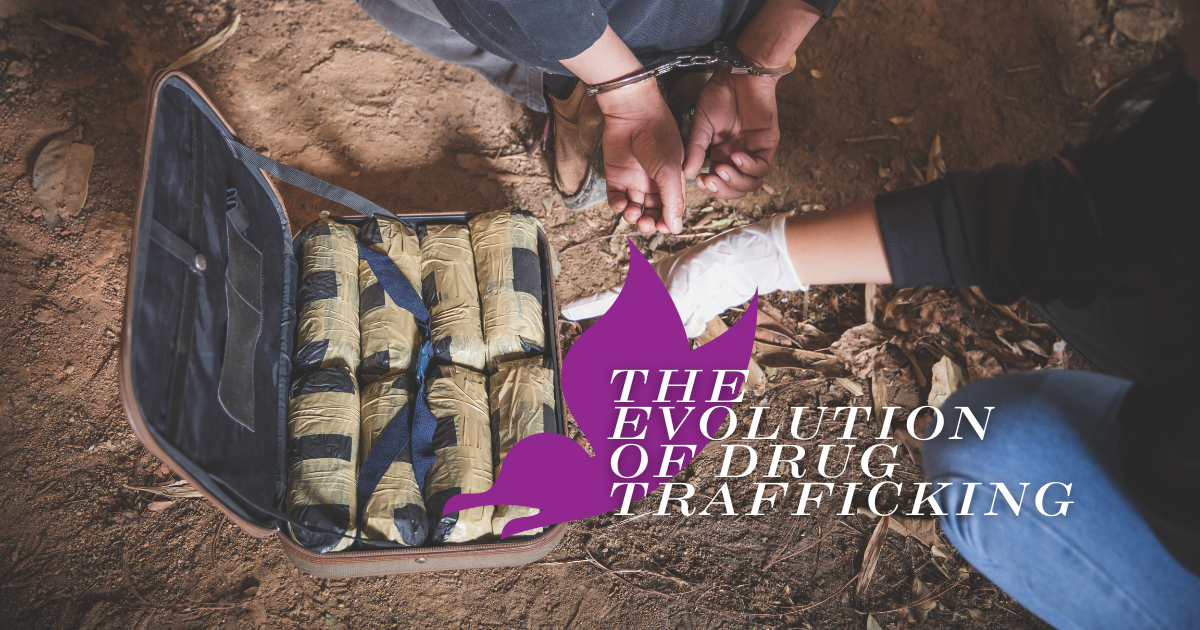This year the CDC released data showing that drug overdose deaths reached new heights in 2017, claiming the lives of more than 72,000 Americans. In response to the growing epidemic, the Trump administration has carefully planned out its all encompassing response in the form of sweeping legislation.
In late October, president Donald Trump signed the SUPPORT for Patients and Communities Act into law, purporting it be the “single largest bill to combat the drug crisis in the history of our country.” Called the SUPPORT (Substance Use-Disorder Prevention that Promotes Opioid Recovery and Treatment) for Patients and Communities Act, it flew through the House and Senate in an uncharacteristic showing of mass bipartisan support.
The new piece of legislation funnels money through multiple grant programs to address the growing opioid crisis. Some of the major issues the the bill hopes to deal with include:
- Increased monitoring and detection of fentanyl and other synthetic opioids
- Preventing addiction for susceptible seniors
- Increase access to Medicaid funding for substance abuse treatment
- Help pregnant women and new mothers receive treatment for opioid use disorder
- Expanding oversight of opioid prescriptions and payment
- Raising awareness about the influence that synthetic drugs can have
- Increased data sharing in regards to opioid abuse
- Developing protocols to prevent overdoses in emergency rooms
- Crackdown on the counterfeit drug industry
- Combat opioid-related infectious diseases such as Hepatitis C
- Curtail illegal drug importation
The allocated funding from this bill, along with that provided by the 21st Century Cures Act, provides more than $500 million per year for the states to address their own addiction crises. However, experts argue that even this amount may not be enough to fully address the scope of the issue. States will need to take a careful look at what kinds of policies and measures are most effective in addressing addiction, which they can do by following case studies, listening to research, and broadening their approach. Here are some of the most effective ways that states can use federal funding to combat addiction.
Enhanced Mental Health Screening
In short: Incorporating vital screening measures for substance abuse, suicidal ideation, and other mental health indicators into more healthcare organizations.
Screening for substance abuse, suicidal ideation, and other mental health indicators is a critical step that healthcare systems and businesses can implement to begin saving lives. The Substance Abuse and Mental Health Services Administration has a specific outline known as the SBIRT method (Screening, Brief Intervention, and Referral to Treatment) that has been linked to lower healthcare costs, lower rates of drug and alcohol misuse, and reduced risk of trauma. School, businesses, and healthcare organizations can use this tool to help identify individuals at risk for suicide or developing a substance abuse disorder. The process is as follows:
SBIRT Method:
- Screening: Involves screening patients on a regular basis using age-appropriate questionnaire
- Brief Intervention: Involves an intervention with patients that show at-risk behaviors by introducing feedback on their unhealthy behaviors while educating them about available tools and resources involved with substance abuse and suicidal ideation.
- Referring for Treatment: If a patient is considered at high risk, they are referred for further professional assessment and services.
Reduce Access to Lethal Means/Excess Medications
In short: Incorporate the CALM approach for managing painkiller medication and utilize safe disposal methods for excess medications
A proven successful method of reducing access to firearms and unused medication is the Counseling on Access to Lethal Means (CALM) approach. One study in Colorado on this intervention method found that parents of children being treated for suicide risk made significant changes in their behavior surrounding safe storage after undergoing the program. In follow up interviews, 76% of parents reported that medications were safely locked up (compared to 10% beforehand) and 100% of those with guns said that their arms were securely locked up (compared to 67% previously).
Another solution to reducing access to medications is implementing medication “take back” programs that prevent drug misuse by encouraging all excess medicines to be deposited in safe disposal locations. At least 53% of people who misuse prescription drugs get them from family and friends, so by encouraging drop box disposal methods states can reduce the harm associated with an overabundance of prescription drugs lying around.
Community Collaboration
In short: Incorporate better community feedback when crafting solutions to the addiction crisis, including surveying the medical community to determine what the barriers to SUD treatment and care are.
Our local communities, families, and work organizations are on the front lines when it comes to combating depression, anxiety, suicidal ideation, and substance abuse disorders. We need to work to ensure that our communities value strong social ties and healthy friendships, as well as work with organizations to promote programs that help stem the tide of drug and alcohol addiction and help families heal.
Social isolation, alienation, and shame are all fertile breeding grounds for suicidal ideation and drug and alcohol addiction. Sociologist Emile Durkheim once stated the connection between suicide and alienation: “Melancholy suicide. —This is connected with a general state of extreme depression and exaggerated sadness, causing the patient no longer to realize sanely the bonds which connect him with people and things about him. Pleasures no longer attract.”
To help better identify barriers to SUD care for patients and physicians, states will need to conduct surveys of physicians to get a ground-level view of the specific problems encountered while seeking treatment. Oregon recently partnered with the Centers for Disease Control and Prevention to add questions to the Adult Behavioral Risk Survey, a biannual measurement of behavioral health in the state. It will add questions to the already robust survey, asking Oregonians:
1) if they once had a drug or alcohol problem but no longer do
2) if they identify as a person in recovery
3) what supports or resources they use to assist their recovery.
This kind of information will help state authorities, policymakers, treatment providers, and recovery community organizations better understand what is working what is not working, and how individuals with addictions and those in recovery can better be served.
Healthcare systems can work with communities to help reduce harm, provide support, and educate people on topics of addiction and mental health. For example, some hospitals provide training for first responders and police officers on how to safely administer the anti-overdose drug Naloxone.
The Massachusetts General Hospital Center for Community Health and Improvement launched four coalitions focused on preventing substance abuse disorders, including take-back programs, naloxone distribution, increasing connections to treatment through recovery coaches, and screening patients for substance abuse. The Charlestown Drug Court Coalition has seen some notable success, with Emergency Medical Service responses for heroin overdoses decreasing 62% from 2003 to 2010 and drug-related deaths decreasing 78% between 2003 and 2008.
Pennsylvania has worked to launch 45 Centers of Excellence which are designed to reduce gaps in services and provide better front line support for Medicaid beneficiaries. These COE’s are existing healthcare providers that apply for the special designation of being a Center of Excellence. What that means is that they can provide MAT treatment, certified recovery peer specialists, and care coordination with rehab facilities, acting as a hub for all things recovery in the area. They then coordinate with other third party providers such as primary care physicians and other community based providers (the spokes) to reach more potential patients and increase access to affordable treatment. PA has also used federal funding from the opioid grant in order to expand its capacity to serve commercial patients in rural and western parts of the state. Early findings on these centers’ impact found that the 62% of the beneficiaries that engaged in treatment remained in treatment for at least 30 days, compared to 2014 when only 33% of beneficiaries remained in treatment for at least that period.
Teach Healthcare Providers How to Address Addiction
In short: Make addiction training an integral component of medical care education. And properly train doctors on how to prescribe MAT.
According to this report for the National Center on Addiction and Substance Abuse at Columbia University, there is a “failure of the medical profession at every level – in medical school, residency training, continuing education, and in practice” to adequately address the addiction crisis. Dr. Timothy Brennan, director of the addiction medicine fellowship at Mount Sinai Health System, says that combating the crisis with the current workforce is like “trying to fight World War II with only the Coast Guard.”
According to a 2017 study by Milliman, insurance disparities between addiction treatment and other mental health therapies is striking, as is the difference between mental health care and physical ailments. The mental health and SUD parity laws have done much to close this gap, but unfortunately there is still a lingering hesitation to comply. Doctors too may not enter this field because of the stereotype that patients are dismissive and incurable, amounting to an entirely thankless job.
In Conclusion
There are numerous evidence based policies that can help curb drug addiction within the United States. The federal funding provided by the comprehensive opioid legislation passed this year can serve as the foundation for stronger and more effective efforts at stemming the tide of addiction. However, it will take decisive action to begin implementing plans on the scale needed to fully address this crisis. Stay tuned to the Landmark blog for more stories on the latest trends in the drug and alcohol recovery industry as well as informational resources for the disease of addiction.

Choose Recovery Over Addiction
We're here 24/7 to help you get the care you need to live life on your terms, without drugs or alcohol. Talk to our recovery specialists today and learn about our integrated treatment programs.






